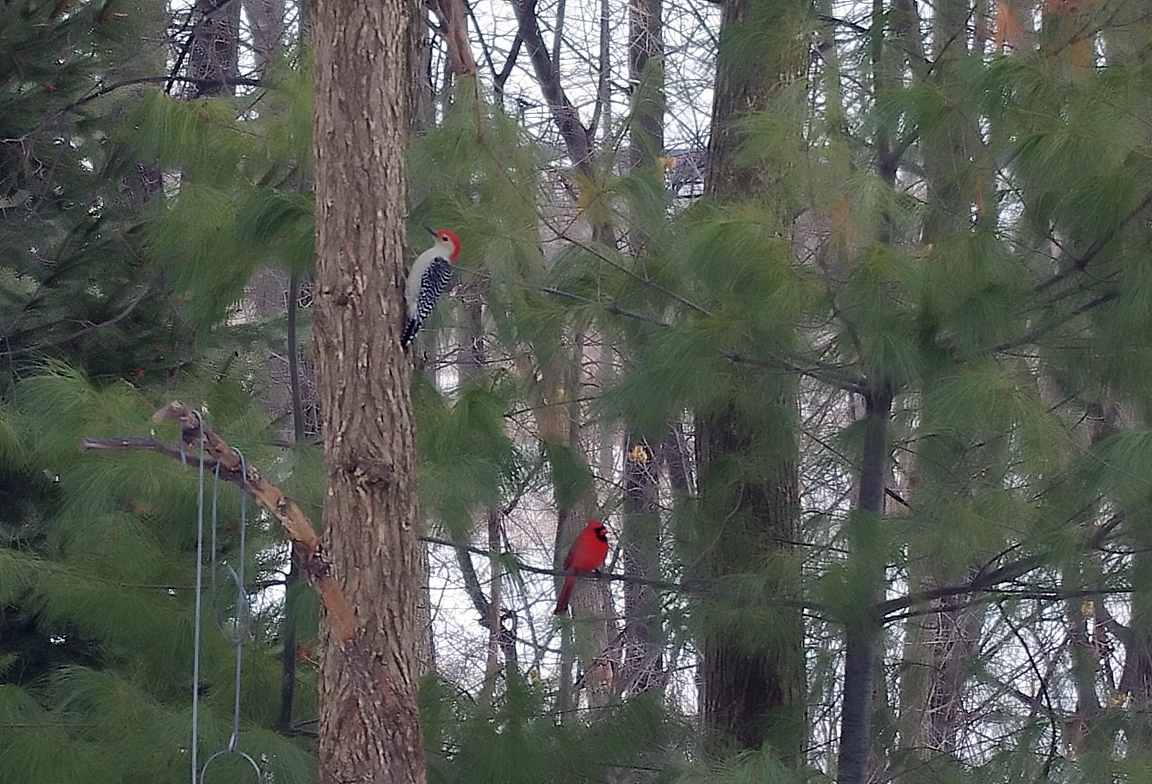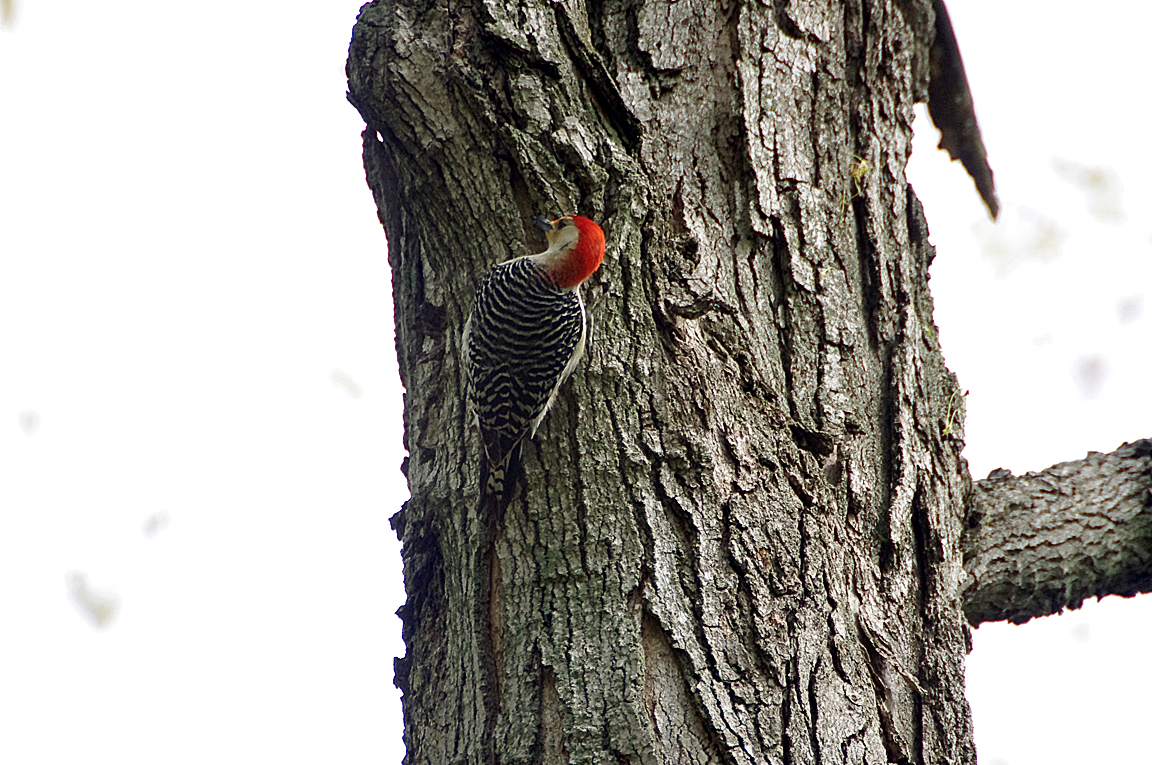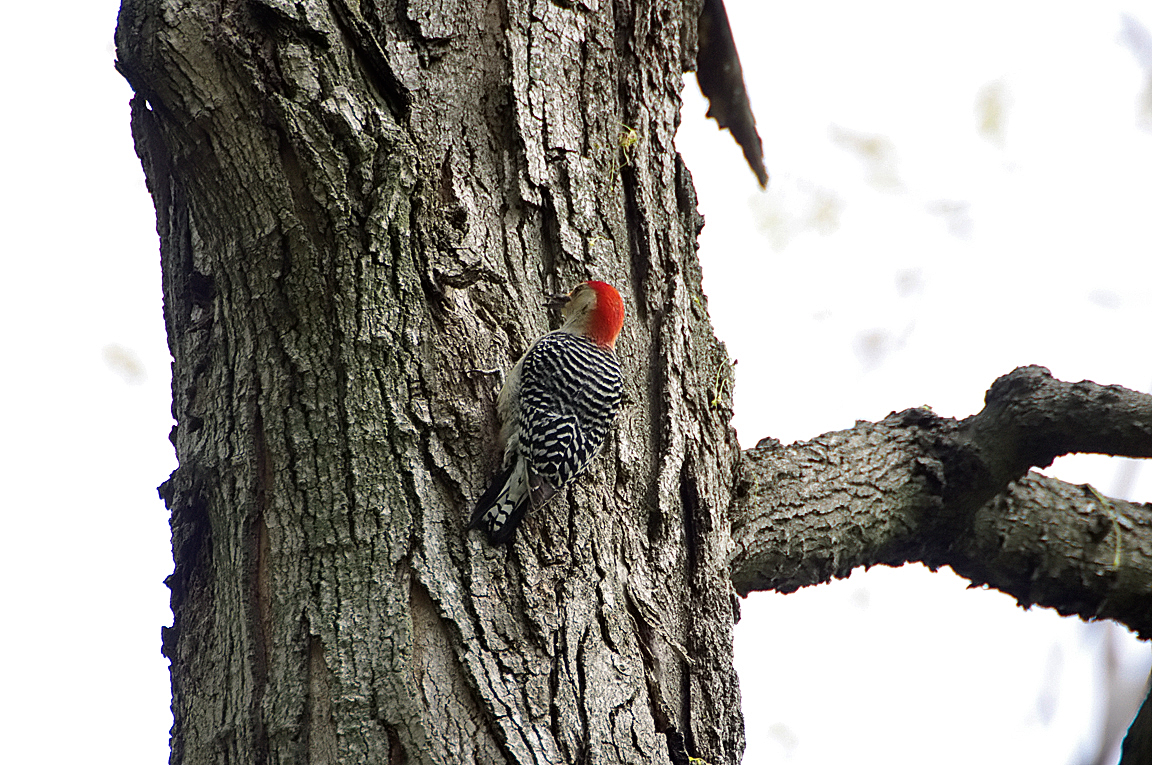|
|
|
 |
Red-bellied Woodpecker
|
| Melanerpes carolinus | |
The Red-bellied Woodpeckers are pale, medium-sized woodpeckers common in forests of the East. Their strikingly barred backs and gleaming red caps make them an unforgettable sight - just resist the temptation to call it a Red-headed Woodpecker, a somewhat rarer species that's mostly black on the back with big white wing patches. Learn the Red-bellied's rolling call and you'll notice these birds everywhere.
Interesting Information
You may sometimes see Red-bellied Woodpeckers wedge large nuts into bark crevices, then whack them into manageable pieces using their beaks. They also use cracks in trees and fence posts to store food for later in the year, a habit it shares with other woodpeckers in its genus. Starling. In some areas, half of all Red-bellied Woodpecker nesting cavities are taken over by starlings.
For birds that nest in cavities, nest holes are precious turf. Red-bellied Woodpeckers have been known to take over the nests of other birds, including the much smaller (and endangered) Red-cockaded Woodpecker. But more often they're victims to the aggressive European Starling. As many as half of all Red-bellied Woodpecker nests in some areas get invaded by starlings.
You may occasionally see a Red-bellied Woodpecker flying quickly and erratically through the forest, abruptly changing direction, alighting for an instant and immediately taking off again, keeping up a quick chatter of calls. Scientists categorize this odd behavior as a type of play that probably helps young birds practice the evasive action they may one day need resources in one area.
A Red-bellied Woodpecker can stick out its tongue nearly 2 inches past the end of its beak. The tip is barbed and the bird's spit is sticky, making it easier to snatch prey from deep crevices. Males have longer, wider-tipped tongues than females, possibly allowing a breeding pair to forage in slightly different places on their territory and maximize their use of available food.
The oldest known Red-bellied Woodpecker was 12 years 1 month old.
Description
Adult Description
-
Length Range: 23-27 cm (9-10.5 in)
-
Weight: 68 g (2.4 oz)
A sleek, round-headed woodpecker, about the same size as a Hairy Woodpecker but without the blocky outlines.
Often appears pale overall, even the boldly black-and-white striped back, with flashing red cap and nape. Look for white patches near the wingtips as this bird flies.
Sex Differences
Sexes Similar except females have just a red nape on the back of their heads while the males have a full red crown
Immature
Similar to adult except there is no red crown or nape

Photo taken from: The Sibley Field Guide by David Allen Sibley

© 2003 Cornell Lab of Ornithology
|
Habitat |
|
You can find this species across most of the forests, woodlands, and wooded suburbs of the eastern United States, including oak-hickory forest, pine-hardwood forest, maple and tulip-poplar stands, and pine flatwoods. It's a bit more common in river bottoms and wetlands, in the south of its range, and at elevations below about 2,000 feet. |
|
Behavior |
|
These birds often stick to main branches and trunks of trees, where they hitch in classic woodpecker fashion, leaning away from the trunk and onto their stiff tail feathers as they search for food hiding in bark crevices. When nesting, males choose the site and begin to excavate, then try to attract a female by calling and tapping softly on the wood around or in the cavity. When a female accepts, she taps along with the male, then helps put the finishing touches on the nest cavity. At feeders, Red-bellied Woodpeckers will push aside most bird species other than Blue Jays. |
|
Food |
|
Though this bird mainly eats insects, spiders, and other arthropods, it eats plenty of plant material, too. In particular, acorns, nuts, and pine cones, as well as seeds extracted from annual and perennial plants and (particularly in fall and winter) fruits ranging from grapes and hackberries to oranges and mangoes. Occasionally eats lizards, nestling birds, even minnows. |
Taxonomy
| Kingdom: | Animalia |
| Phylum: | Chordata |
| Subphylum: | Vertebrata |
| Class: | Aves |
| Order: | Passeriformes |
| Family: | Picidae |
| Subfamily: | Picinae |
| Genus: | Melanerpes |
| Species: | Melanerpes carolinus |
Similar Species |
|
|
Bird Sound |
|
The Red-bellied Woodpecker's most common call is a shrill, rolling kwirr or churr given by both sexes. You might also hear a gruff, coughing cha cha cha sounding through the woods, usually a contact call between mates, or a throaty growl exchanged when birds are close together. |
|
Eggs look like this |
|
Photo taken from: ARCTOS Collaborative Collection Management Solution |




















